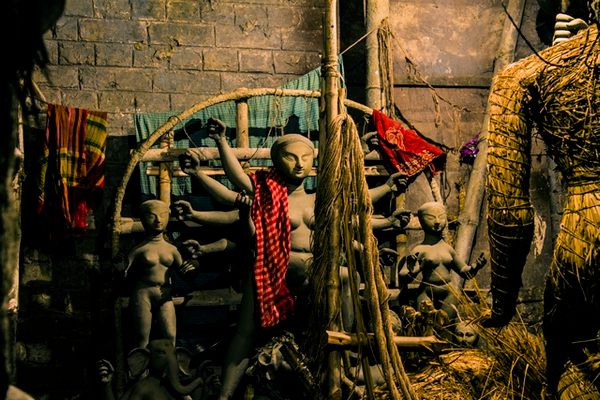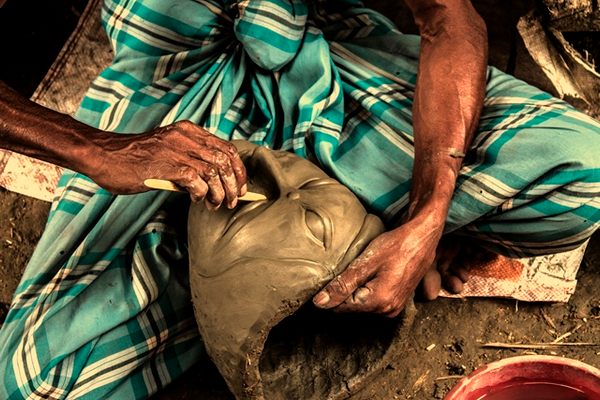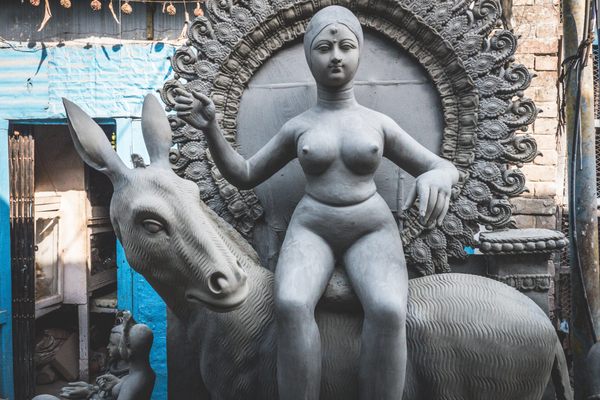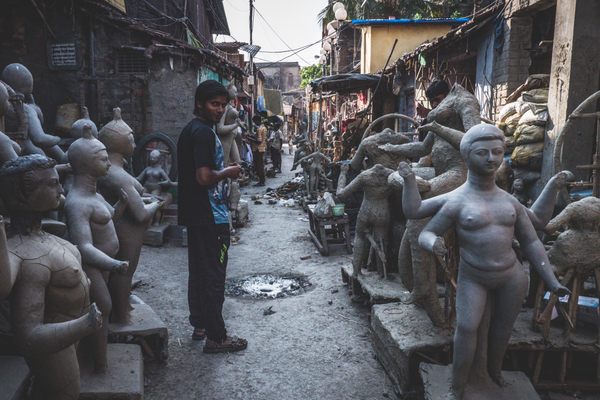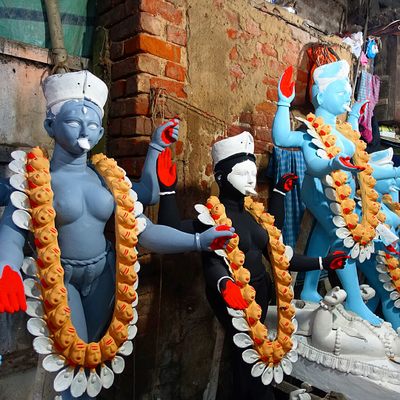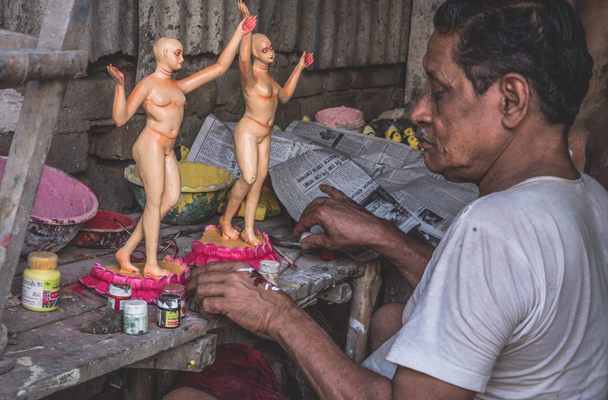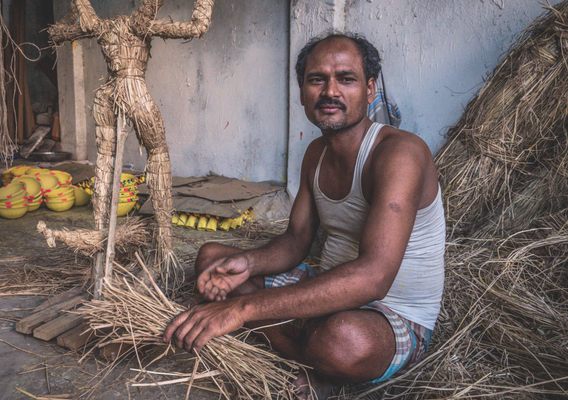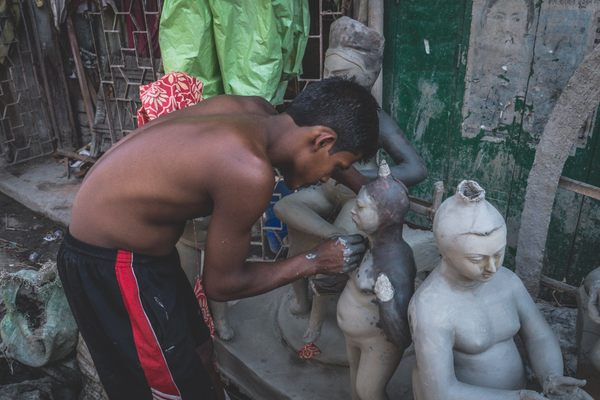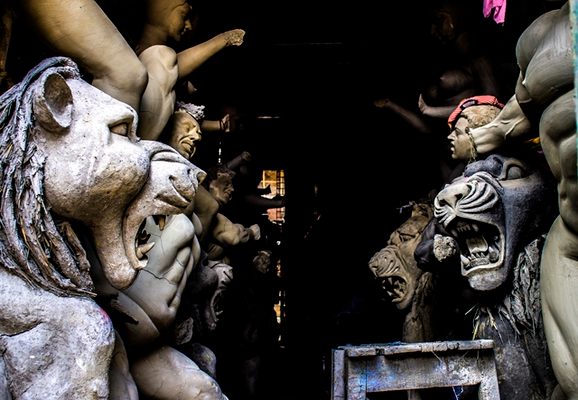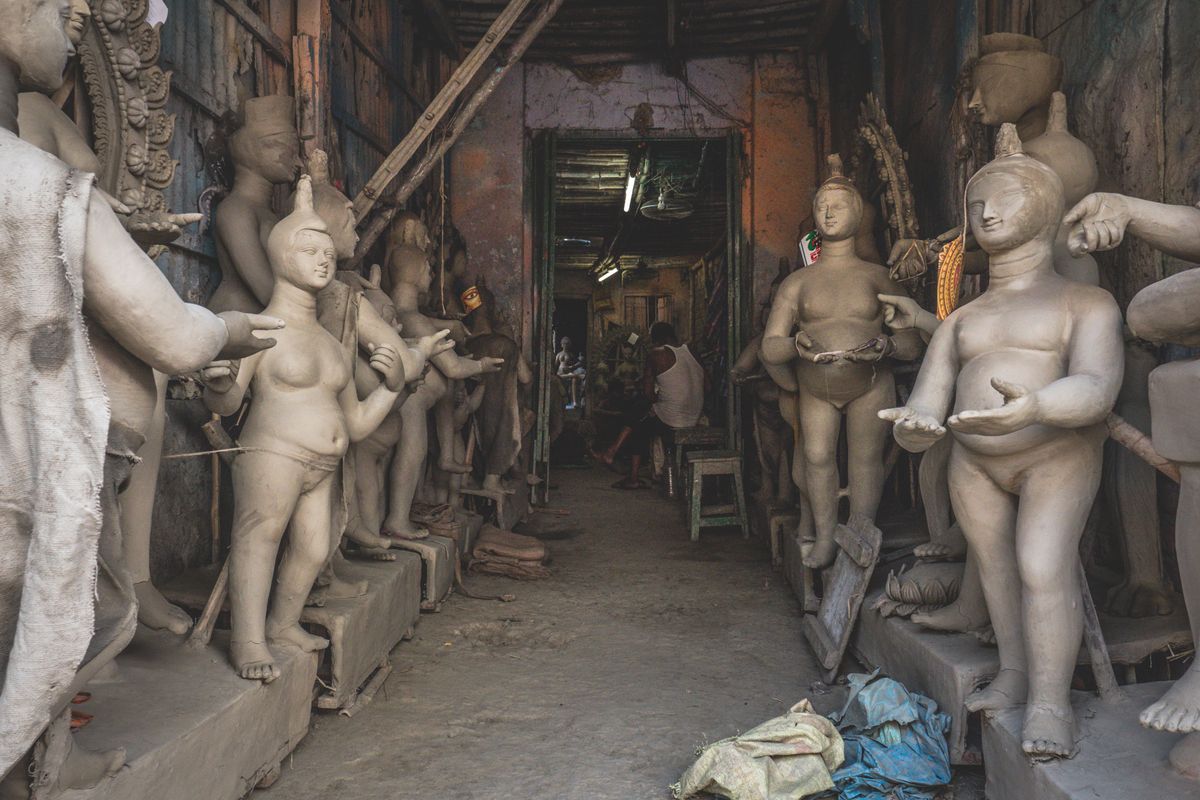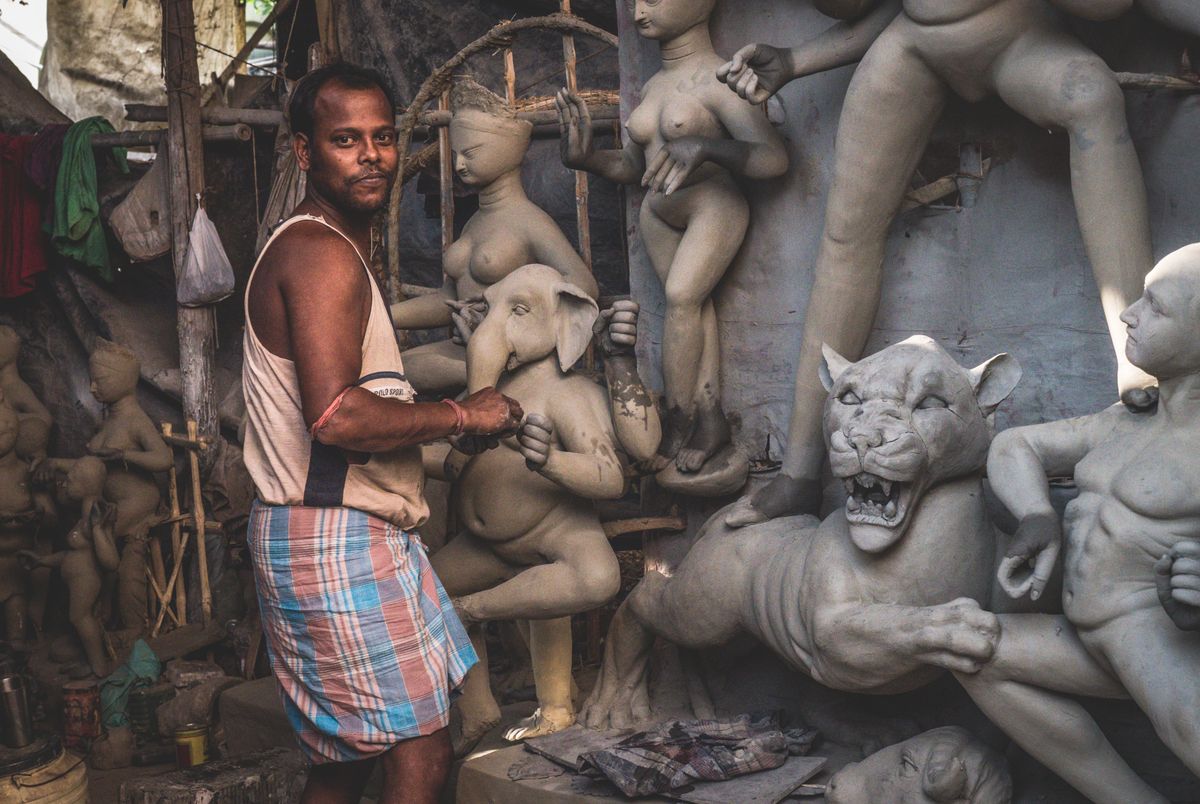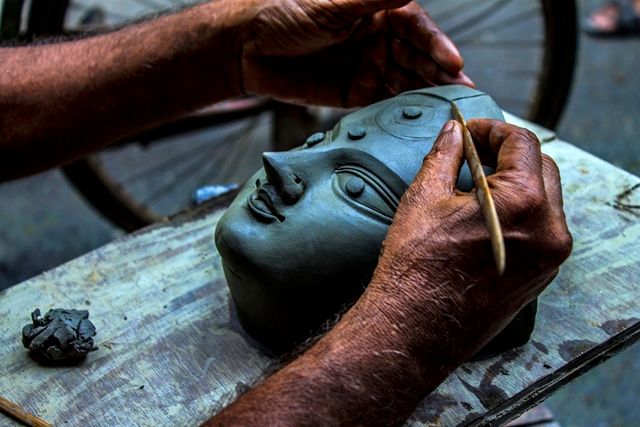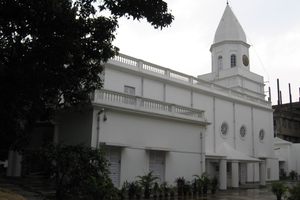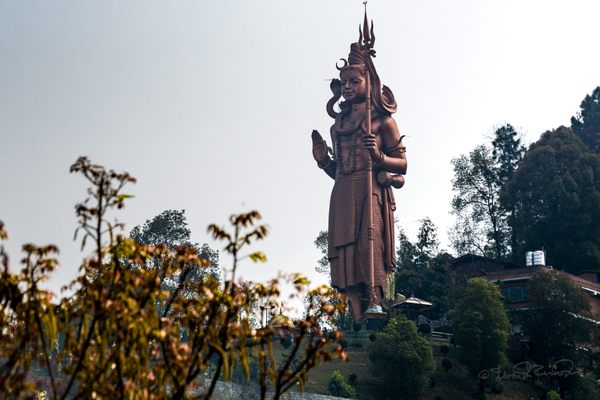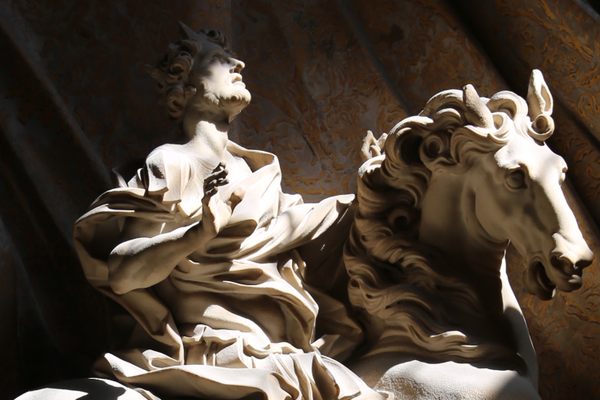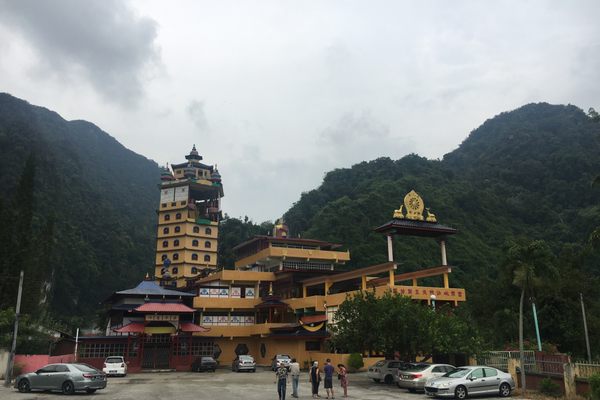About
Crammed into a winding, narrow alleyway in the backstreets of Kolkata, hundreds of workers spend day and night creating beautiful god-like artworks made from mud. The clay gods are built for festivals all over India, and the artists packed into the city's Kumortuli neighborhood struggle to keep up with demand.
The artists use mud sourced from the sacred Ganges river or imported from other areas in India. They mold and bind hay and bamboo into shapes to form the statues’ skeletons. Once this is crafted and dried, layers and layers of mud are added until the artist is happy with their work.
The statues are then painstakingly painted, usually by a more experienced artist. Some statues have very intricate details, while others are more simple or abstract. Finally, goddesses are dressed in fine silk saris and elaborate jewels.
Crafting one particular goddess requires an extra step before it’s considered complete. To make the goddess Durga, a priest must collect soil from outside the home of a prostitute. It’s a controversial tradition with an origin clouded by muddy facts. One prevalent theory is that the soil outside a sex worker’s home is considered pure, because a man leaves his virtues at the door before stepping inside. Once the special soil is combined with cow dung, cow urine, and mud from the sacred river, the Durga statue is deemed complete.
The biggest of the Indian festivals featuring the statues, Durga Puja, happens in the fall. The months leading up to this festival become frantic, especially when a single, life-sized sculpture usually takes seven days and several people to complete in full.
During the 10th day of the Durga Puja festival, the statues of the gods are floated down the nearby river. The statues eventually sink, letting the mud return to the river once again. This tradition symbolizes the return of the gods and goddesses back to nature.
Related Tags
Know Before You Go
The closest train station is Sovabazar metro station in North Kolkata. From there the mud workshops of Kumortuli are an 11-minute walk.
Most of the workshops are centred around Bonomali Sarkar St, but can also be found in all areas of Kumortuli potters' quarter.
Delhi and Rajasthan: Colors of India
Discover Colorful Rajasthan: From Delhi to Jaipur and Beyond.
Book NowCommunity Contributors
Added By
Published
January 25, 2018

